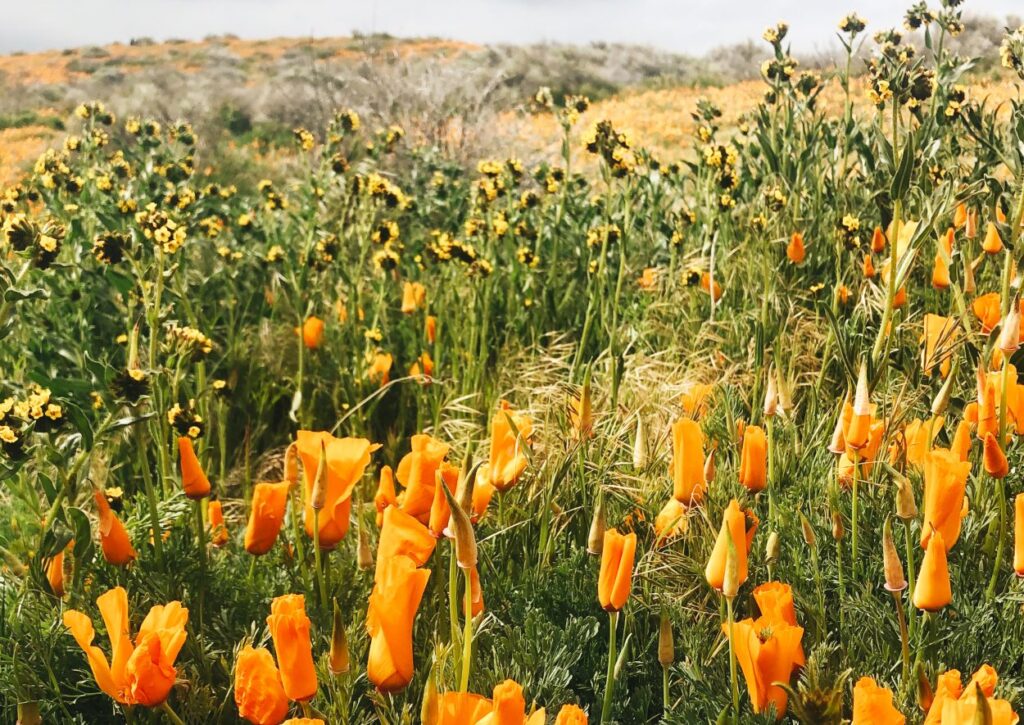
Written by Mitali Shukla and Satvi Sunkara
How far are you willing to drive to get the perfect Instagram picture? Well, if you’re a California resident, you don’t have to go too far. California’s 2019 super bloom brought a noteworthy display of hundreds of flower species growing along the west coast, causing thousands of flowers to bloom and is even visible from space. This year’s bloom has attracted many to visit the fields — and take Instagram photos.
But, the crowds the super bloom attracts may have a detrimental effect on the fields. Some visitors have walked over and stepped on the field’s greenery, including California’s state flower, the golden poppy.
“People were obviously there to take pictures, just like my friends and I,” said Ashley Birdsall, a freshman integrated educational studies major who went to see the super bloom at Walker Canyon in Lake Elsinore, California. “There were clear paths where we could walk without stepping on the flowers.”
But despite these existing paths, many visitors have been going off trail to pick flowers or lay down in fields to get a photo for their social media posts. According to The Washington Post, a helicopter illegally landed in a field of poppies in Lancaster, about 70 miles north of Los Angeles, and its passengers began a hike.
Instances like this, along with traffic congestion issues temporarily shut down public access to Walker Canyon on March 18. Since then, the park officials have required visitors to take $10 shuttles on weekends to see the flowers.
“By attracting the general public to see this natural beauty, hopefully people will walk away with a greater appreciation of open spaces, as opposed to more housing tracks and strip malls,” said Chapman biological sciences professor Jennifer Funk.
In what might be considered the biggest bloom in the past two decades, the California Travel and Tourism Commission reported that the seven inches of rain since July 2018 is to thank for the weather conditions that caused the bloom.
“When the rain comes just right, we start getting these soaking rains from fall through winter,” said Betsy Knaak, the executive director for the Anza-Borrego Desert Natural History Association. “The water is just the right amount to germinate these native annual seeds that are stored in the ground here.”
After eight years of drought in southern California, the rainfall accumulated throughout the past year help seeds have time to spread and germinate.
“We experienced between nine to 19 years of drought,” Knaak said. “When you have a year with more traditionally average rainfall, you get the seeds responding.”

